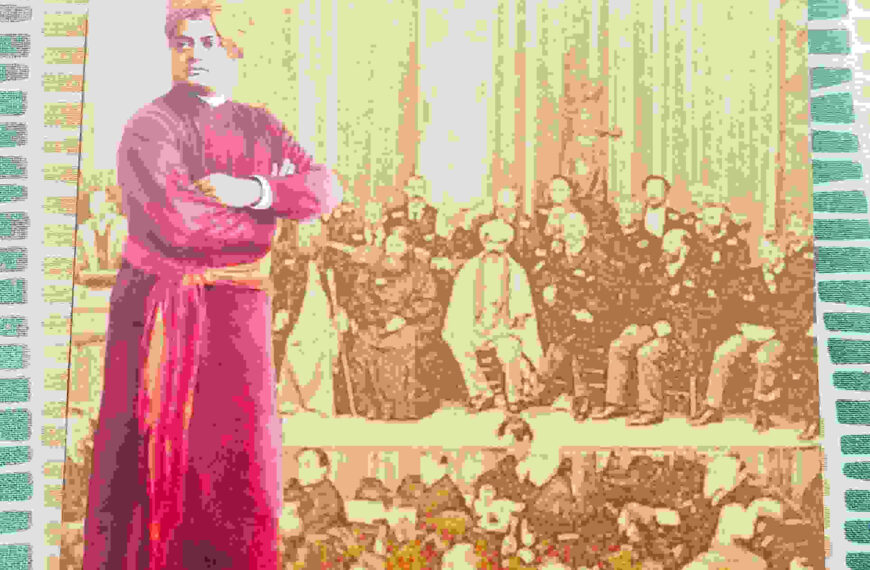Nilanjana retells the stories from the Srimad Bhagavatam, bringing alive the essential Indian wisdom of the yore. In the second part of the narrative, she tells us about Sage Narada revealing to Ved Vyas the mysteries of his earlier birth. Here Ved Vyas is surprised how the son of Brahma could have a mortal past. Find out about it, from the conversation of the two sages, in the weekly column, exclusively in Different Truths.
“What?” Vyasa’s voice echoed amazement as he added, “You are the son of Brahma. How can you be born earlier? Isn’t birth and re-birth for mortals only?”
Narada smiled, “I am talking about the previous kalpa1 . I was the only son of a woman, who used to be a domestic help in an ashram (retreat of monks). Once, during the rainy season, a group of sages came to the ashram. I was about five years old then and my mother had asked me to cater to their needs. Unlike other kids, I was not full of pranks. I spoke little and kept to myself most of the time. The sages seemed to have taken pity on me and allowed me to be around them most of the time. Gradually, I developed a lot of interest in the stories of Narayana. Eventually, I got engrossed in his greatness and used to think of him all the time. I also realised that there is a lot more beyond this body. The restlessness (rajoguna) and inertia (tamoguna) of the mind disappeared. After four months when the sages were supposed to leave, I was very sad. But they were kind enough to bless me with the knowledge of the universe. If one performs any action with the greed of successful end results in mind, then they just get entangled in the maya2 of the world. On the contrary, devoting all actions to the divine was the way to selflessly perform any action. Hence, if one can forego his desire and be dedicated, he can manage to free himself from the twirls of maya and unite with the cosmic infinite. Was this not simple enough?
asked me to cater to their needs. Unlike other kids, I was not full of pranks. I spoke little and kept to myself most of the time. The sages seemed to have taken pity on me and allowed me to be around them most of the time. Gradually, I developed a lot of interest in the stories of Narayana. Eventually, I got engrossed in his greatness and used to think of him all the time. I also realised that there is a lot more beyond this body. The restlessness (rajoguna) and inertia (tamoguna) of the mind disappeared. After four months when the sages were supposed to leave, I was very sad. But they were kind enough to bless me with the knowledge of the universe. If one performs any action with the greed of successful end results in mind, then they just get entangled in the maya2 of the world. On the contrary, devoting all actions to the divine was the way to selflessly perform any action. Hence, if one can forego his desire and be dedicated, he can manage to free himself from the twirls of maya and unite with the cosmic infinite. Was this not simple enough?
“After the sages went away, I was alone. Since I was the only son of my mother and she was very attached to me, I could not leave her. Some time later, she died of snake bite. I was free of the entanglement and travelled north. I crossed many countries, forests, and rivers. I was tired and sat down to meditate.
“The form of  Narayana took shape in my mind – the blue form with sankha, chakra, gada, padma3 . As I quivered, the shape disappeared. Desperate, I tried to evoke the form. It would not come back.
Narayana took shape in my mind – the blue form with sankha, chakra, gada, padma3 . As I quivered, the shape disappeared. Desperate, I tried to evoke the form. It would not come back.
“Misery coiled around me when a comforting divine voice spoke, ‘You will not see me again in this birth. The momentary vision of my form was to assure you that you will definitely reach me in the end. You are very dear to me.’ Since then I sing praises of Narayana all the time. In course of time, I shed the mortal body. Death arrived in the form of a garland of light. I travelled towards the eternal ocean where Narayana was resting. I entered into Brahma along with his breath. After four yugas4 passed, when Brahma was creating the world, I was born as his son. Now, I travel all over the world with my Veena, Mahati (that the devas5 gifted me) and spread the knowledge of love and devotion.
“When I sing, the form of Narayana appears in my mind and makes me happy immediately. It is like a dosage of instant happiness!
“And to repeat what I have already told you before, highlight the path of Bhakti Yoga6 . You have already explained Karma Yoga7 in Mahabharata, Gnyana Yoga8 in the Upanishads and Karma Kanda9 in the Vedas. Isn’t Bhakti Yoga the easiest path?
“My dear Ved Vyasa, I urge you to be a little more compassionate to your fellow mortals.”
Narada observed that Ved Vyasa was looking pre-occupied. As he took leave, Vyasa closed his eyes and slipped into a trance. He saw Narayana resting on ananta10 . He witnessed the beginning of creation, the Viratpurusha11 and the huge lotus from which Brahma was born. He observed the birth of the worlds.
Vyasa composed Bhagavata Purana12 and taught it to his son Suka, who took this knowledge across to the world.
(To be continued)
Glossary
- Kalpa – Duration of the world. It is believed that worlds are created and dissolved at the will of the Divine.
- Maya – Illusion that the tangible world is real.
- Sankha, chakra, gada, padmapadma – Conch, Discuss, Club/mace and Lotus – weapons of Narayana. Various stories explain their significance. In due course, with the stories the significance of each will be explained
- Yuga – An age of the world. There are four yugas – Krita Yuga, Treta Yuga, Dvapara Yuga and Kali Yuga. The durations of each are : Krita – 1,728,000 years, Treta – 1,296,000 years, Dvapara – 864,000 years, Kali – 432,000 years.
- Devas – Divine beings
- Bhakti Yoga – Bhakti means devotion. Upheld in Srimad Bhagavatam, devotion to the divine is the easiest way to reach liberation from the karmic (action-based) cycle of birth and death. Other ways are Karma Yoga and Gnyana Yoga.
- Karma Yoga – The yoga prescribed in the Bhagavad Gita, where selfless action (action without any kind desire) leads to liberation.
- Gnyana Yoga – This yoga, acquired through knowledge of the universe, also leads to liberation.
- Karma Kanda – The section of the Vedas that deals with ceremonial and religious rites/rituals and their merits.
- Ananta – Infinity, endless, boundless.
- Viratpurusha – The first form assumed by the Creator.
- Bhagavata Purana – Another name for Mahapurana, Srimad Bhagavatam.
Footnote: Srimad Bhagavatam is often called the Bhagavad Purana. Authored by Ved Vyasa, the stories are about the various avatars (incarnations) of Lord Vishnu, also known as Narayana.
©Nilanjana Dey
Photos from the Internet.





 By
By

 By
By
 By
By